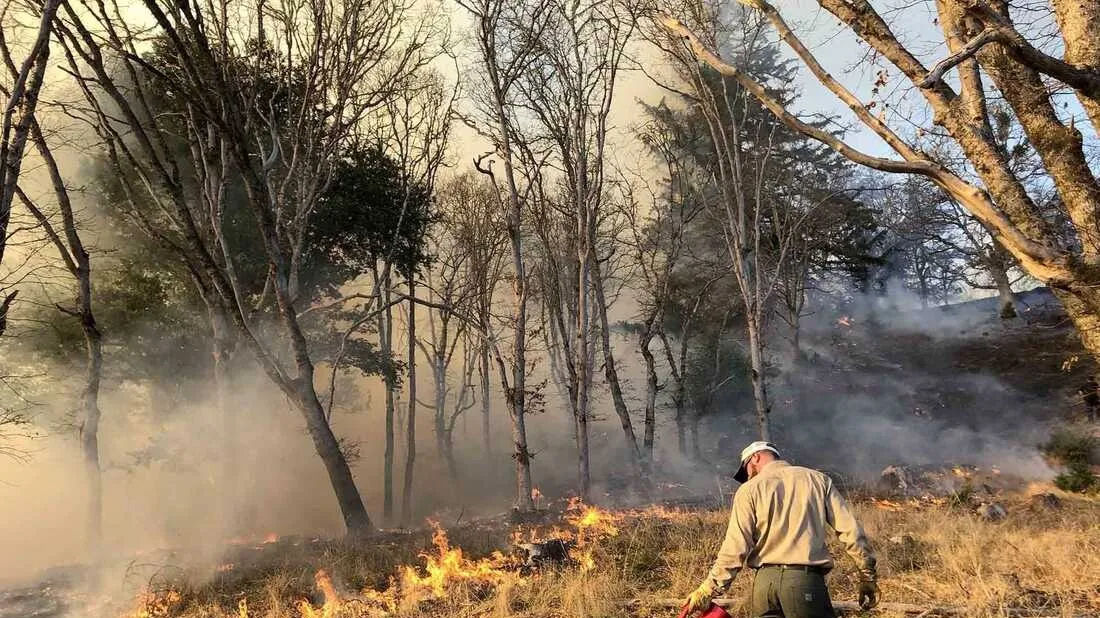Study Finds Low-Intensity Fires Decrease Wildfire Risk by 60%

November 10, 2023
The editorial team at Science X's has thoroughly reviewed this article for credibility and relevance. The key attributes taken into account during the writing process include:
- Fact-checking
- A peer-reviewed publication
- Reliability of the source
- Proofreading
The article was written in consultation with Stanford University
A recent study by researchers from Stanford and Columbia universities addresses the question of preventing high-intensity and often devastating wildfires that are becoming more frequent across the Western U.S.
The study, published on November 10, in Science Advances shows that low-intensity burning, such as controlled fires, managed wildfires, and indigenous cultural burning can mitigate the risk of destructive fires for quite some time. As the U.S. Forest Service reassesses the wildfire strategy, these findings could contribute to a constructive dialogue. The study emphasizes the value of low-intensity fire, an aspect not thoroughly examined before.
Study co-author Michael Wara, director of the Climate and Energy Policy Program at the Stanford Woods Institute for the Environment, hopes that policymakers harness the findings to endorse the scale-up of 'beneficial fire,' a powerful prevention strategy for wildfires.
The study arrives almost five years after California's deadliest wildfire, the Camp Fire. Changing weather patterns coupled with increased amounts of easily combustible plant material have fueled destructive wildfires. The contrast to earlier times when indigenous practices allowed for wildfires and intentional burning is quite noticeable.
The study calls for a shift from solely focusing on fire suppression to incorporating controlled burning and fostering forest resilience. Prior research led by Stanford University reveals the need for fuel treatments for nearly 20% of California's land area.
While past studies have acknowledged the benefits of prescribed low-intensity fires, these have only been conducted within confined areas. This study, however, used 20 years’ worth of satellite data monitoring wildfires across approximately 100,000 square kilometers of California's forests.
The multisectoral research team used state-wide datasets to evaluate fuel characteristics and fire behavior including data from fire policy experts, public health scientists, and statistical and machine learning researchers.
Both prescribed fires and unplanned low-intensity wildfires help in reducing the risk of severe wildfires by removing surface fuels, maintaining a balanced mix of trees, and preventing escalation of fire intensity.
The researchers also assessed the long-term impact of low-intensity fire in mitigating the risk of severe wildfires in the future.
They discovered that an initial low-intensity fire in mixed conifer forests in California can result in a 60% reduction in the risk of catastrophic fire. This effect lasts for a minimum of six years, although it reduces over time. Similarly, a smaller yet crucial reduction in risk was observed in oak-dominated forests.
Policymakers could use the study's results as a foundation for future evaluation of wildland fuel treatments by comparing the quantified benefits to potential costs and risks associated with its implementation.
The timing is good: The U.S. Forest Service has proposed treating nearly 200,000 square kilometers (about 50 million acres) over the next decade through a mixture of fuel treatment strategies. California has proposed increasing the amount of land it treats for wildfires to 2,000 square kilometers (about 500,000 acres) annually.
To be effective, wildland fuel treatments, including prescribed burning, have to be ongoing, periodic maintenance rather than a one-time intervention for forests that are adjacent to communities or critical infrastructure, the researchers write. The risk mitigation benefit of low-intensity burning will depend heavily on careful selection and targeting of the intervention to provide maximum protection for people, communities, and ecosystems.
'This study exemplifies how data science can contribute to climate mitigation through a highly multidisciplinary collaboration,' said study lead author Xiao Wu, an assistant professor of biostatistics at Columbia University who worked on the paper as a Data Science Fellow at Stanford.
'Wildfires present substantial threats to both our ecosystems and human well-being. As scientists, our constant goal is to find practical solutions.'
Journal information: Science Advances
Provided by Stanford University




